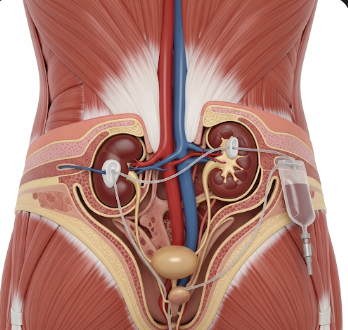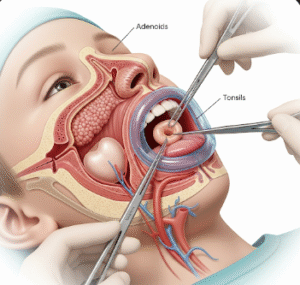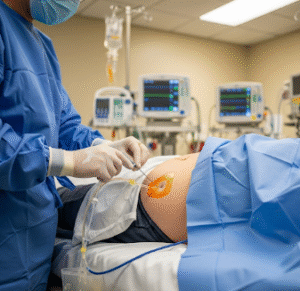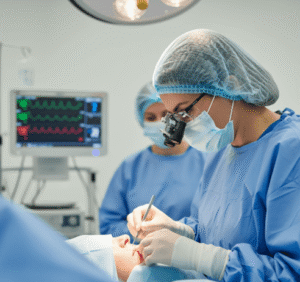Overview
A nephrostomy is a medical procedure where a tube is inserted directly into the kidney through the skin to drain urine when normal flow through the ureters or bladder is blocked. This treatment is commonly used in Korea for patients with kidney stones, tumors, or other urinary tract obstructions. Nephrostomy is often performed as a temporary solution to relieve pressure, prevent infection, and protect kidney function until the underlying condition can be resolved with surgery or other treatments.
In Korea, nephrostomy procedures are highly advanced due to cutting-edge imaging technologies, skilled interventional radiologists, and excellent post-procedure care in specialized urology and nephrology centers.
What is Nephrostomy?
A nephrostomy involves creating an opening in the skin and kidney (a percutaneous tract) to allow urine to bypass blockages and flow into a drainage bag outside the body. It is usually guided by ultrasound or fluoroscopy to ensure accuracy.
- Purpose: To relieve urinary obstruction and prevent kidney damage.
- Common Conditions Requiring Nephrostomy:
- Kidney stones blocking urine flow
- Tumors compressing the urinary tract
- Severe infections such as pyonephrosis
- Post-surgical complications
- Congenital abnormalities of the urinary system
What are the Benefits?
Nephrostomy offers several important benefits:
➡️ Immediate relief of urinary obstruction
➡️ Prevention of kidney failure or permanent kidney damage
➡️ Reduction of infection risk from stagnant urine buildup
➡️ Pain relief from kidney swelling (hydronephrosis)
➡️ Temporary solution that buys time until definitive surgery can be performed
➡️ Improved kidney function monitoring by direct urine drainage
Procedure Details
1) How should I prepare for Nephrostomy?
Preparation is important to minimize risks and ensure a smooth procedure:
- Medical evaluation: Your doctor will review your medical history, perform blood tests, and sometimes request imaging (CT scan, ultrasound, or MRI).
- Fasting: You may be asked not to eat or drink for 6–8 hours before the procedure.
- Medication adjustments: Blood-thinning medications (such as aspirin or warfarin) may need to be stopped.
- IV line: An intravenous line will be placed to give fluids, antibiotics, and sedatives.
- Consent: The risks, benefits, and alternatives will be explained before you sign consent.
2) What happens during the procedure Nephrostomy?
The nephrostomy is usually done under local anesthesia with sedation in a radiology suite or operating room:
- Positioning: The patient lies on the stomach or side.
- Imaging guidance: Ultrasound and/or fluoroscopy is used to locate the kidney.
- Local anesthesia: Numbing medicine is injected at the puncture site.
- Needle insertion: A thin needle is inserted through the skin into the kidney.
- Guidewire placement: A guidewire is inserted to help position the tube.
- Tube insertion: A flexible catheter (nephrostomy tube) is placed into the kidney.
- Drainage: The tube is connected to a urine collection bag outside the body.
The entire procedure usually takes 30–60 minutes.
3) What happens after a Nephrostomy?
Post-procedure care is essential to prevent infection and ensure proper drainage:
- Observation: You’ll be monitored in a recovery room for several hours.
- Pain management: Some soreness at the tube site is normal; painkillers are provided.
- Urine output monitoring: Nurses will check urine color and volume regularly.
- Antibiotics: Preventive antibiotics may be given to avoid infection.
- Tube care: The tube site is cleaned and bandaged; instructions are given for home care.
- Follow-up: Regular imaging and medical check-ups ensure the tube is working properly.
Risks / Benefits
While nephrostomy is generally safe, there are some risks to consider:
Possible Risks:
- Bleeding from the puncture site
- Infection at the kidney or skin site
- Accidental injury to nearby organs
- Tube blockage or dislodgement
- Discomfort from carrying a drainage bag
Key Benefits:
- Rapid relief from painful obstruction
- Protection of kidney function
- Reduced infection risk
- Short hospital stay in most cases
Recovery and Outlook
Recovery after nephrostomy depends on the underlying cause:
- Hospital stay: Many patients stay 1–2 days for observation.
- At home: Patients can walk, eat, and carry out normal activities with some precautions.
- Tube care: Cleaning the site, keeping the bag below kidney level, and avoiding kinks in the tube are important.
- Duration: The nephrostomy tube may remain for days, weeks, or months depending on the condition.
- Outlook: Once the underlying issue (such as a stone or tumor) is treated, the tube can often be removed permanently.
When To Call the Doctor
Call your doctor immediately if you experience:
- Fever or chills (possible infection)
- Severe pain at the tube site or flank area
- Decreased urine output or no urine draining
- Red or foul-smelling urine
- Dislodged or leaking tube
Best Korea Option / Process
South Korea is internationally recognized for advanced urology and interventional radiology. Patients benefit from:
- High-quality imaging technology (CT, MRI, fluoroscopy-guided procedures)
- Experienced specialists in nephrology and minimally invasive surgery
- Comprehensive hospital systems such as Severance Hospital, Asan Medical Center, Samsung Medical Center offering world-class kidney care
- Efficient post-procedure care, including infection prevention and kidney monitoring
- Affordable costs compared to Western countries, while maintaining premium healthcare standards
Korean hospitals follow international protocols, ensuring patients receive safe, accurate, and effective nephrostomy procedures. For international patients, many hospitals also offer multilingual support services and medical tourism packages.
✅ Highlights:
- Nephrostomy is a life-saving procedure for urinary obstructions.
- Performed safely under imaging guidance by expert Korean specialists.
- Quick relief from pain and kidney damage prevention.
- Requires proper care of the tube and close medical follow-up.
- Korea offers world-class treatment options at leading hospitals.













